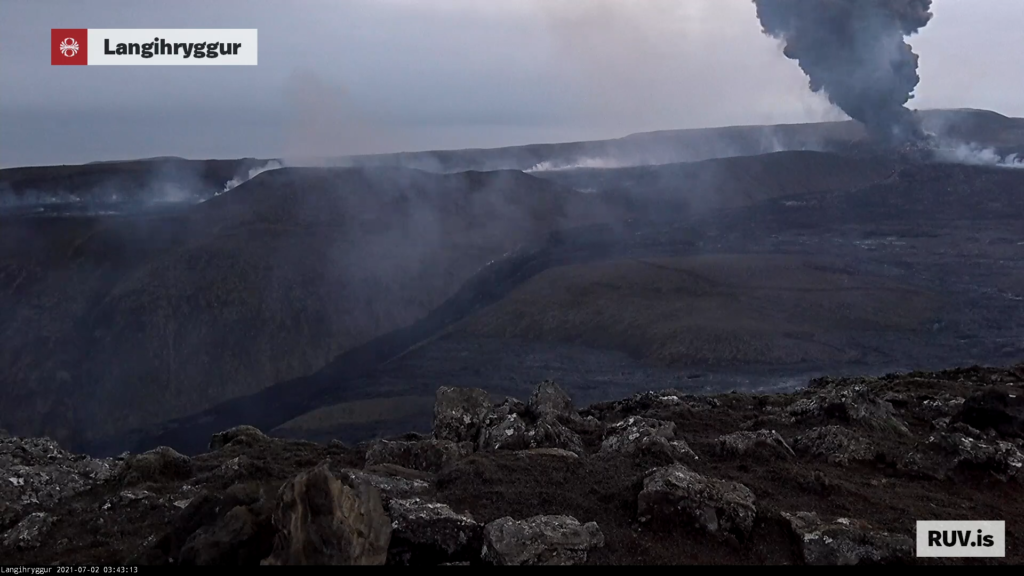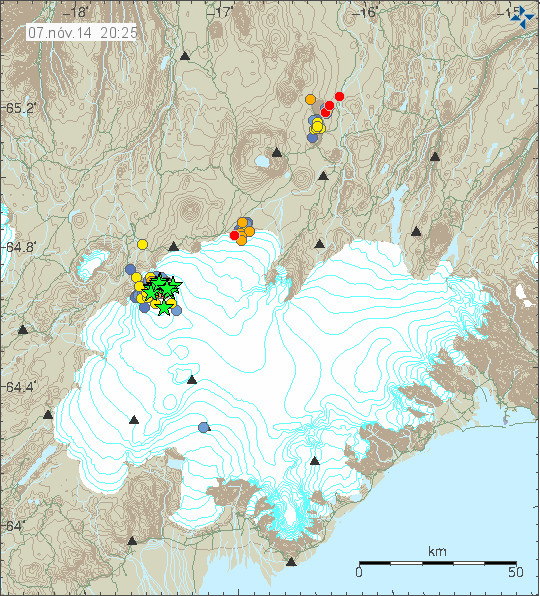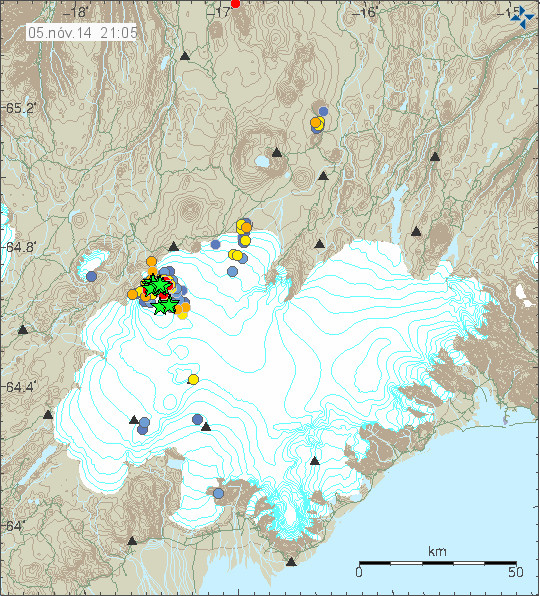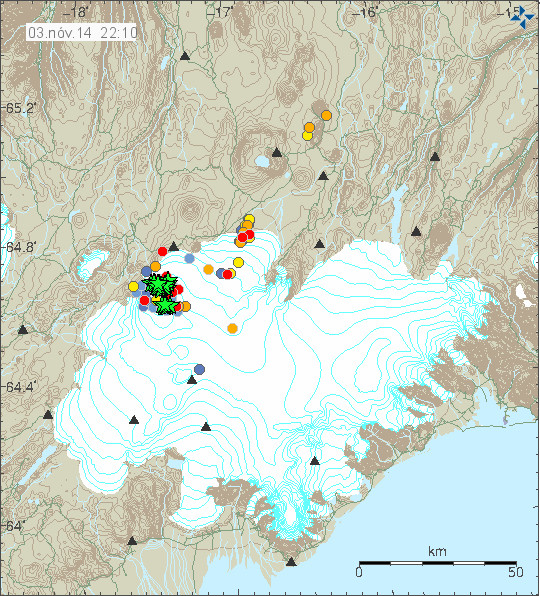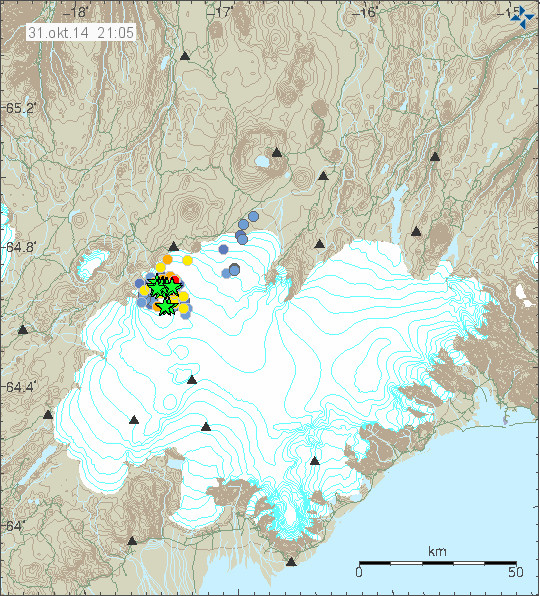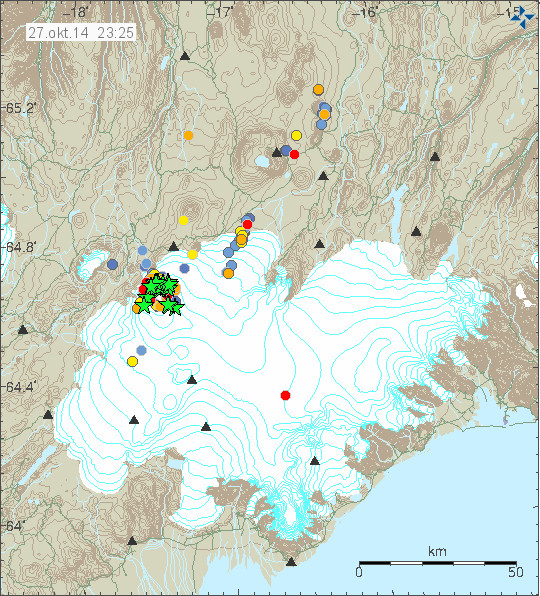No major change took place in the eruption in Holuhraun during the weekend. The lava field is now around 70 square kilometres wide and it keeps growing each day. I don’t know the total volume so far, since that depends on the thickness of the lava. Last calculations that I know of estimated it to be around 1,0 km³, it is save to assume that volume is now greater since the last estimate that I know of is at least one month old by now.
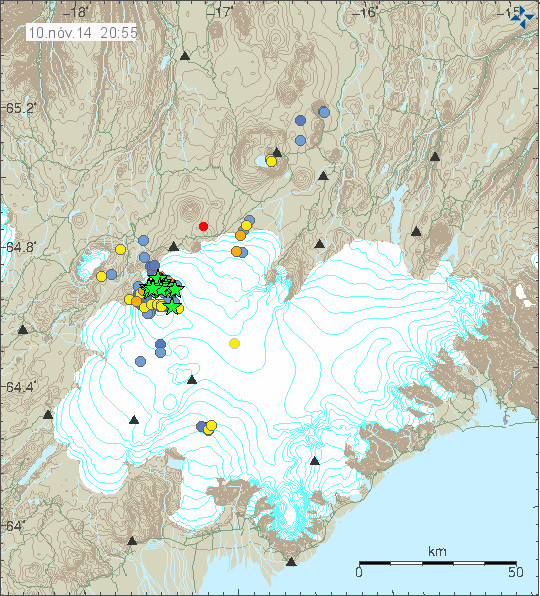
The earthquake activity in Bárðarbunga volcano. Copyright of this image belongs to Icelandic Met Office.
Largest earthquake this weekend had the magnitude of 5,2. Other earthquakes where smaller, but many magnitude 3,0 and larger earthquakes did happen as usual in Bárðarbunga volcano. The crust in Bárðarbunga volcano is now heavily fractured, this allows heat from the volcano easier way to the surface. This also means new hot springs are going to open up and older ones are going get more active. There is no major change in Bárðarbunga volcano eruption at the moment, as has been the case for most part of past two months.
Article on what is happening in Bárðarbunga volcano
I am working on a article (in my head at the moment) on what is happening inside Bárðarbunga volcano. It is not ready yet, I do hope to have it ready tomorrow if I can process all the data for the article, in order to properly figure out my self what is going on in Bárðarbunga volcano.
My geophone network
I run a geophone network of just two geophones in Iceland at the moment. Once I get an apartment the total number of working geophones is going to be three. I have decided that once I move from Iceland to Azores Islands[1] it is not going to be workable to keep the network running due the technical problems doing so. I am not going to stop recording earthquakes, I am just going to do so in Azores Islands. At the moment I also have four year backlog of earthquakes that I have to properly add time and location data to. That is a lot of earthquakes over this period, since large events have happened and Bárðarbunga alone added up to 2000 earthquakes to my earthquake database in August and now I add around 10 – 20 earthquakes from Bárðarbunga volcano each day (this is just average). The geophone network as it now stands is going to be running for the next 5 – 10 years while I live in Iceland, after that I am going to relocate it to Flores Island when I move there[2]. At the moment I don’t know for sure when that is going to happen, all I know now is that it is going to happen.
1: I am currently living in Denmark. I move next month to Iceland.
2: I plan up to ten years ahead so that I know what I need to do and know before I do it.
